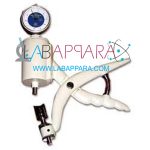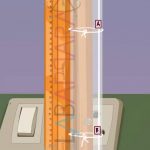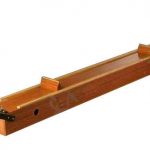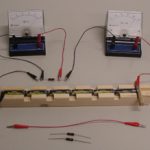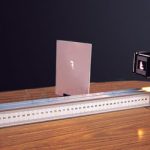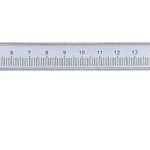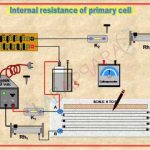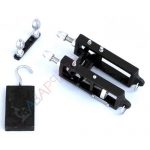Scientific Equipment
Showing 17–28 of 28 results
Tablet Hardness Tester (Peizer type)
Tablet Hardness Tester (Peizer type) – Scientific Equipment Tablet hardness testing, is a laboratory technique used by the laboratory to test the breaking point and structural integrity of a tablet under conditions of storage, and handling before usage. The breaking point of a tablet is based on its shape. Pfizer type: Suitable for tablet hardness … Continue reading “Tablet Hardness Tester (Peizer type)”
To determine the coefficient of viscosity of a given viscous liquid by measuring terminal velocity of a given spherical body.
Viscosity of a liquid – Stoke’s method: Objective To determine the coefficient of viscosity of a given viscous liquid by measuring terminal velocity of a given spherical body. Theory How do you define viscosity? Viscosity is the property of a fluid by virtue of which an internal resistance comes into play when the liquid is … Continue reading “To determine the coefficient of viscosity of a given viscous liquid by measuring terminal velocity of a given spherical body.”
To determine the frequency of alternating current using a sonometer.
To determine the frequency of alternating current using a sonometer. AC Sonometer: A sonometer is an apparatus used to study the transverse vibrations of stretched strings. It is in the form of a hollow wooden rectangular box. On the wooden rectangular box there are two bridges and a pulley at one end. A wire string … Continue reading “To determine the frequency of alternating current using a sonometer.”
To determine the resistance per cm of a given wire by plotting a graph of potential difference versus current, and hence to determine its resistivity.
Ohm’s Law Apparatus: To determine the resistance per cm of a given wire by plotting a graph of potential difference versus current, and hence to determine its resistivity. According to the Ohm’s law, “The current flowing through a conductor is directly proportional to the potential difference across its ends provided the physical conditions (temperature, dimensions, … Continue reading “To determine the resistance per cm of a given wire by plotting a graph of potential difference versus current, and hence to determine its resistivity.”
To draw the reverse characteristic curve of a Zener diode and to find its reverse breakdown voltage.
To draw the reverse characteristic curve of a Zener diode and to find its reverse breakdown voltage. Our Objective To draw the reverse characteristic curve of a Zener diode and to find its reverse breakdown voltage. The Theory: Zener diode A Zener diode is a heavily doped silicon crystal diode which allows current to flow … Continue reading “To draw the reverse characteristic curve of a Zener diode and to find its reverse breakdown voltage.”
To find the focal length of a convex mirror using a convex lens.
Convex Mirror – Focal Length: The Theory: Convex mirror A convex mirror is a curved mirror in which the reflecting surface bulges towards the light source. Convex mirrors reflect light outwards; therefore they are not used to focus light. A convex mirror is also known as fish eye mirror or diverging mirror. The image formed … Continue reading “To find the focal length of a convex mirror using a convex lens.”
To know the use of the Vernier Calipers
To know the use of the Vernier Calipers Our Objective To know the use of the Vernier Calipers. To measure the diameter of a small spherical / cylindrical body. To measure the length, width and height of the given rectangular block. To measure the internal diameter and depth of a given beaker/calorimeter and hence find … Continue reading “To know the use of the Vernier Calipers”
To measure the internal resistance of a given primary cell using potentiometer.
The Potentiometer-Internal resistance of a cell: Theory Potentiometer Potentiometer is a device used to measure the internal resistance of a cell, to compare the e.m.f. of two cells and potential difference across a resistor. It consists of a long wire of uniform cross sectional area and of 10 m in length. The material of wire … Continue reading “To measure the internal resistance of a given primary cell using potentiometer.”
To study the static characteristic of a transistor (Common Emitter Configuration)
Transistor characteristics: Our Objective: To study the static characteristic of a transistor (Common Emitter Configuration) The Theory: A transistor is a semiconductor device used to amplify or switch electronic signals and electrical power. It is composed of semiconductor material with at least three terminals for connection to an external circuit. A voltage or current applied … Continue reading “To study the static characteristic of a transistor (Common Emitter Configuration)”
To study the variation in volume with pressure for a sample of air at constant temperature by plotting graphs between P and V, and between P and 1/V.
Boyle’s Law: Objective To study the variation in volume with pressure for a sample of air at constant temperature by plotting graphs between P and V, and between P and 1/V. Theory Properties of gases and Gas laws Gaseous state is a state of matter in which the substance does not have any specific shape … Continue reading “To study the variation in volume with pressure for a sample of air at constant temperature by plotting graphs between P and V, and between P and 1/V.”
Water Voltmeter
Water Voltmeter – Scientific Equipment Cup shaped with fittings and two graduated test tubes. The glass vessel is mounted on a sturdy wooden base fitted with terminals and eureka wire electrodes. Supplied with brass metal test tube holder and graduated tubes. A voltmeter is a scientific instrument used for measuring quantity of electricity (electric charge) … Continue reading “Water Voltmeter”
Young’s modulus Experiment
Young’s modulus Experiment Our Objective Our aim is to determine the Young’s modulus of elasticity of the material of a given wire using Searle’s apparatus. The Theory Before we move ahead, do you know what a Searle’s apparatus is? Searle’s apparatus consists of two metal frames F1 and F2. Each frame has a torsion head … Continue reading “Young’s modulus Experiment”

